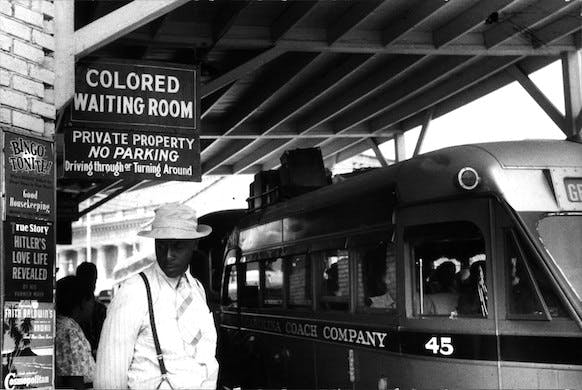Historian Caught in a Twist of History
Why do C. Vann Woodward’s books remain so influential? He probed the humanity of African Americans and the fraught history of race relations with the sensitivity of a William Faulkner.

‘C. Vann Woodward: America’s Historian’
By James C. Cobb
The University of North Carolina Press, 504 pages
C. Vann Woodward (1908-99) did not want to be a historian. He did not want to slog through archives or teach for a living. Drenched in the language of Thomas Wolfe, Woodward always thought of himself as a storyteller.
Yet Woodward did not write fiction. If he tried to do so, his biographers, John Herbert Roper and James C. Cobb, have not found any examples.
To begin with, Woodward thought of himself as a biographer. Yet his biography of Southern populist Tom Watson sold less than 600 copies, and Woodward concluded he could not make a living outside of the academy. After earning the requisite degrees, he taught at several universities — most notably Johns Hopkins and Yale — training generations of distinguished historians that included Pulitzer Prize winners.
Woodward’s narrative history achieved literary distinction, making a profound impact on the historical profession and the public. His best-known books, “The Strange Career of Jim Crow” (1955) and “The Burden of Southern History” (1960), are masterpieces that changed the way Southern history was written.
Both books overturn the work of Ulrich Bonnell Phillips (1877-1934) and William Dunning (1857-1922), apologist historians for slavery and for the putative white “redeemers” who took over Southern state governments after Reconstruction. These historians perpetuated the fiction that corrupt African American politicians could not rule themselves, let alone others.
Woodward’s work argued that the separation of the races in Jim Crow legislation actually set back the racial progress just beginning to be made after the Civil War. Populists like Watson advocated a white-Black alliance that later disintegrated in white reaction against integration and in Watson’s increasing psychopathology.
Woodward wanted to believe, in other words, that Jim Crow had been an aberration that in the historian’s own time had been regarded, on the contrary, as a fixed Southern attitude that contemporary legislation would be powerless to undo.
If Woodward was right — that it had taken Jim Crow legislation to install segregation — then new legislation could abolish racial discrimination, an argument that fit very well with the NAACP’s successful effort to have the 1896 Supreme Court separate but equal ruling overturned, as it was in 1954.
Woodward’s thesis, as Mr. Cobb demonstrates, relied on meager evidence. Other historians argued persuasively that segregation preceded its codification in law, and that whatever appeal Watson made to African Americans had more to do with strategic political considerations than with any fellow feeling. As African Americans lost the right to vote in the post-Reconstruction era, Watson’s appeals for their support diminished.
So why do C. Vann Woodward’s books remain so influential? He probed the humanity of African Americans and the fraught history of race relations with the sensitivity of William Faulkner, whose fiction Woodward began to read carefully by the end of the 1930s.
Woodward is not the first historian to write a literary masterpiece that is a problematic work of history. He burnished his own reputation, Mr. Cobb explains, by publishing over several decades well-wrought essays that made history plain but also powerful to general readers of mass circulation magazines.
Woodward’s high standing also derived from his meticulous analysis of historical works in periodicals and journals and in voluminous private correspondence with his colleagues and graduate students.
Woodward, the father, son, and husband, does not get that much more attention in Mr. Cobb’s work than it is accorded in what Roper called his “intellectual biography” published in 1987. Indeed, Mr. Cobb relies on several of Roper’s groundbreaking interviews.
By the late 1960s, Black separatists and radical white scholars challenged Woodward’s integrationist paradigm. He opposed Black Studies departments and deplored the attack on his white friend, novelist William Styron, for having the temerity to write about Nat Turner and his slave revolt.
To Woodward, radical historians and Black Power activists were destroying his life’s work based on a political agenda that distorted history. This renowned historian apparently did not see an irony at work — that his own desire to change the present with a truncated vision of the past was susceptible to an inversion that emphasized the separation of the races that he could not abide.
Mr. Rollyson is the author of “Uses of the Past in the Novels of William Faulkner” and a forthcoming essay collection, “William Faulkner On and Off the Page: Essays in Biographical Criticism.”

